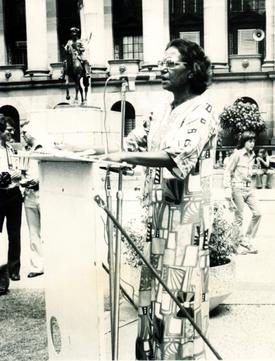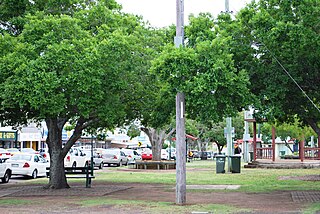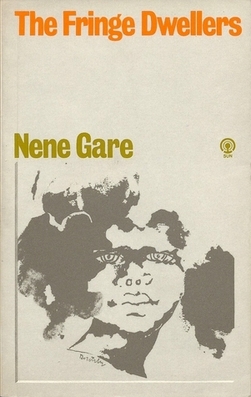
Bruce Beresford is an Australian film director, opera director, screenwriter, and producer. He began his career during the Australian New Wave, and has made more than 30 feature films over a 50-year career, both locally and internationally in the United States. He is a two-time Academy Award nominee, and a four-time AACTA/AFI Awards winner out of 10 total nominations

Oodgeroo Noonuccal ( UUD-gə-roo NOO-nə-kəl; born Kathleen Jean Mary Ruska, later Kath Walker was an Aboriginal Australian political activist, artist and educator, who campaigned for Aboriginal rights. Noonuccal was best known for her poetry, and was the first Aboriginal Australian to publish a book of verse.
Dingo refers to the Australian dingo

Ernest Ashley Dingo AM is an Indigenous Australian actor, television presenter and comedian, originating from the Yamatji people of the Murchison region of Western Australia. He is a designated Australian National Living Treasure.

Justine Florence Saunders was an Australian stage, television and film actress. She was a member of the Woppaburra, an Australian Aboriginal people, from the Kanomie clan of Great Keppel Island in Queensland. On the small screen she appeared in numerous series, mini-series and telemovies.
The term fringe dwellers has been used in Australia to describe groups of Aboriginal Australians who camp on the outskirts of towns and cities, from which they have become excluded, generally through law or land alienation as a result of colonisation. In Adelaide, South Australia, the term was applied particularly in the early days of settlement to those who camped in the Adelaide park lands around the city centre.

Murgon is a rural town and locality in the South Burnett Region, Queensland, Australia. In the 2021 census, the locality of Murgon had a population of 2,220 people.
Heartland, known as Burned Bridge in some countries, is an Australian television drama series that ran on ABC Television in 1994. It ran for 13 episodes and starred Cate Blanchett and Ernie Dingo, as well as a large number of Aboriginal Australian actors.
The Dirtwater Dynasty is a five-part Australian drama miniseries, first screened on Network Ten in 1988. It was directed by Michael Jenkins and John Power.
Brian Gregory Syron was an actor, teacher, Aboriginal rights activist, stage director and Australia's first Indigenous feature film director, who has also been recognised as the first First Nations feature film director. After studying in New York City under Stella Adler, he returned to Australia and was a co-founder of the Australian National Playwrights Conference, the Eora Centre, the National Black Playwrights Conference, and the Aboriginal National Theatre Trust. He worked on several television productions and was appointed head of the ABC's new Aboriginal unit in 1988.

Robert Lewis Maza, known as Bob Maza, was an Aboriginal Australian actor, playwright and activist.

Arran Emrys Gare is an Australian philosopher known mainly for his work in environmental philosophy, philosophy of science, philosophy of culture and the metaphysics of process philosophy. He currently holds the position of Associate Professor in the Faculty of Life and Social Sciences at Swinburne University of Technology in Melbourne, Australia.

Bedevil, styled BeDevil, is a 1993 Australian horror film directed by Tracey Moffatt, the first feature directed by an Australian Aboriginal woman.

Nene Gare was an Australian writer and artist, best known as the author of the novel The Fringe Dwellers (1961), which was made into the 1986 Australian film of the same name directed by Bruce Beresford.
The Cake Man is a 1975 play by Aboriginal Australian writer Bob Merritt, notable for being the first play written by an Indigenous Australian person to be published, televised and to tour out of Australia. A telemovie was made of a 1977 performance of the play. The Aboriginal Theatre Company was formed by Bob Merritt and Brian Syron especially to produce the play for a tour to the United States in 1982.
Jindalee Lady is a 1992 Australian film about an Aboriginal Australian woman who is a successful fashion designer. Directed by Brian Syron, it is the first feature film directed by an Aboriginal person in Australia. It is also notable for featuring dancers from the Bangarra Dance Theatre.
Susan Kathleen Milliken is an Australian film producer and author.

The Fringe Dwellers is a 1961 novel written by the Western Australian author Nene Gare. It was made into a 1986 film of the same name directed by Bruce Beresford.
Robert James Merritt, known as Bob Merritt or Bobby Merritt and credited as Robert J. Merritt, was an Aboriginal Australian writer and activist. He is especially known for his play The Cake Man, and for founding the Eora Centre for the Visual and Performing Arts.










